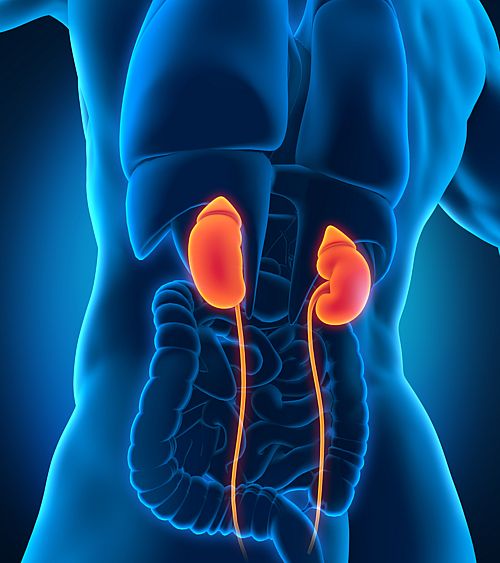Renal Disease

Chronic kidney disease (CKD) is associated with a very high risk of cardiovascular events and the mortality rate from cardiovascular disease is more than double in people with CKD compared to the general population.[38] The ability to identify patients at risk of cardiovascular disease and subsequently monitor the effects of treatment, from the early stages of CKD through to dialysis or transplantation, could lead to improved outcomes for kidney disease patients.
Arterial stiffness and measures of wave reflection have been shown to be powerful predictors of major cardiovascular events in CKD and can provide guidance in therapy selection. [39-44] Arterial stiffness and central arterial pressure waveform analysis with the SphygmoCor® System provide valuable insights into the treatment of chronic kidney disease patients. Measures of arterial stiffness and central hemodynamics have become important tools for providing a better understanding of outcomes with various therapeutic approaches for CKD and ESRD patients.
Arterial stiffness and measures of wave reflection are well established in the field of chronic kidney disease (CKD) and have been shown to be strong independent risk factors for morbidity and mortality in all stages of chronic kidney disease, including end-stage renal disease (ESRD) with dialysis and kidney transplantation.[40-48] Furthermore, these measures also provide prognostic ability for identifying patients at risk of chronic kidney disease progression.[49]
CKD has a number of significant co-morbidities that present additional cardiovascular risk, such as diabetes and hypertension. [38,50] Each of these brings additional treatment considerations.
Antihypertensive therapy is important in CKD patients, as well as dialysis timing and composition and immunosuppressant agents for kidney transplant recipients. [50-52] There is a growing body of research highlighting the effects each of these has on arterial stiffness and measures of wave reflection. [53-55,21]
Arterial stiffness and measures of wave reflection have been well established as a factor in ESRD, but more recently the degree of arterial stiffness has also been shown to be important in CKD patients who are pre-dialysis group.[5] In addition, increases in aortic pulse wave velocity (PWV) and aortic augmentation index (AIx) are commonly associated with other conditions highly prevalent in CKD patients, such as hypertension and diabetes.[6,7]
The most recent European guidelines for the management of arterial hypertension recommend evaluation of aortic PWV for asymptomatic organ damage in hypertensive patients.[8] Furthermore, two key position papers have also recommended the clinical use of aortic PWV for primary and secondary disease prevention[9] and to provide additional information beyond traditional risk factors for prediction of cardiovascular events.[10]
Effect of calcium/phosphate management
Investigation of new and existing approaches to manage calcium/phosphate metabolism, vascular calcification and CKD-related mineral and bone disorders have also been examined in relation to the effects on arterial stiffness.[27,28] Aortic PWV has been shown to increase in hemodialysis patients when a standard calcium-containing phosphate buffer was used, but then decreased significantly following a subsequent six-month period after changing to sevelamar, a phosphate binder that does not contain calcium.[27]
Vitamin D therapy is commonly used for treating bone and mineral disorders in CKD and ESRD, and a recent study highlighted that the pharmacological use of one of the forms of active Vitamin D, α-calcidol, in hemodialysis patients was associated with accelerated progression of aortic PWV and a higher progression of AIx, suggesting that vascular health may need to be further addressed with Vitamin D therapy.[28]
Effect of additional medications
There were similar findings in a study of hemodialysis patients on Warfarin. The use of Warfarin was associated with an accelerated increase in aortic PWV and AIx and the patient group had twice the risk of all-cause mortality, compared to a group with no Warfarin use.[29]
Effect of immunosuppressant therapy
Recent studies have examined the effects of newer classes of immunosuppressant drugs on central blood pressure as measured by central arterial pressure waveform analysis and arterial stiffness after transplantation.[33,34] Betalacept was shown to be associated with lower central augmentation pressure [33] compared to CsA, and drugs in the Proliferative Signal Inhibitors class appear to be associated with an improvement in AIx.[34]
Cyclosporin A (CsA), but not Tacrolimus, has been shown to be associated with higher AIx after kidney transplantation. While both drugs come from the same class of immunosuppressants, CsA has been associated with increased arteriosclerosis, left ventricular hypertrophy, and hypertension in kidney transplant recipients.[30] Maintenance treatment with Tacrolimus has also been associated with a reduction in AIx [31] and no deterioration in aortic PWV 12 months post-transplant.[32]
Effect of hypertension medication
Blood pressure control is an important consideration in all stages of chronic kidney disease. Blood pressure-lowering drugs are prescribed in 70-90% of kidney transplant recipients.[35]There is a large body of evidence showing the effects of antihypertensive drugs on arterial stiffness, the central arterial pressure waveform, and wave reflections.[36] Furthermore, the value of central arterial pressure waveform analysis to guide hypertensive management has been demonstrated[37] and may result in changes of the medication class selection to better manage arterial stiffness.


